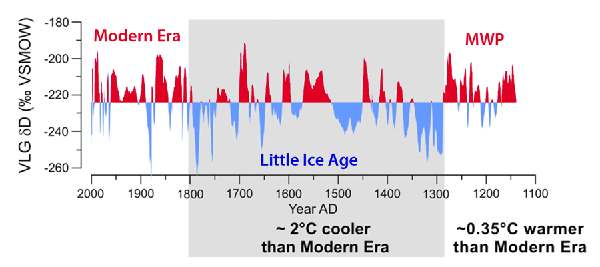Reference
Bertler, N.A.N., Mayewski, P.A. and Carter, L. 2011. Cold conditions in Antarctica during the Little Ice Age -- Implications for abrupt climate change mechanisms. Earth and Planetary Science Letters 308: 41-51.
Description
The researchers obtained new deuterium (δD) data from the Ross Sea region of Antarctica that they acquired via analysis of the top fifty meters of a 180-meter-long ice core that had been extracted from the ice divide of Victoria Lower Glacier in the northernmost McMurdo Dry Valleys, which they converted to temperature data by means of a temperature-isotope relationship developed by Steig et al. (1998) from data obtained from the Taylor Dome ice core record. This work revealed three climatically-distinct time periods: the last 150 years of the Medieval Warm Period (MWP, AD 1140 to 1287), the Little Ice Age (LIA, AD 1288 to 1807), and the Modern Era (ME, AD 1808 to 2000). Although the authors report that "the final 150 yrs of the MWP were ... about 0.35 °C warmer than the ME," the graphic of their temperature proxy (shown below) indicates that peak MWP temperatures were approximately equal to peak ME temperatures. We therefore characterize this work as a Level 2 study for our MWP Project, where peak MWP temperatures are about the same as peak ME temperatures.





